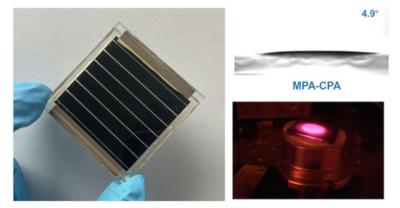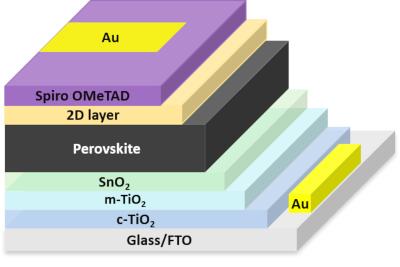Researchers develop efficient inverted perovskite solar cells using a novel molecular hole-transporter
Researchers from East China University of Science and Technology, Jilin University, Huazhong University of Science and Technology, ShanghaiTech University, Chinese Academy of Sciences, Shanghai Jiao Tong University and University of Potsdam have found that a new molecular hole-transporter can improve the performance of inverted perovskite solar cells and mini modules.
Left: mini module. Upper right: contact angle of the perovskite solution on the self assembled monolayer. Lower right: PL emission of a perovskite film. Image from University of Potsdam website.
Inverted perovskite solar cells are seen as particularly promising thanks to their simple fabrication at low costs and their relative stability. Inverted perovskite solar cells resemble organic solar cells, with a layer of perovskite replacing the organic absorber layer. In the recent study, the authors developed a novel hole transport layer based on a self-assembled monolayer. This monolayer consists of amphiphilic molecules, molecules that are both hydrophilic (water-soluble) and hydrophobic (water-fearing).





